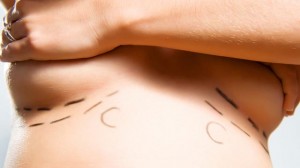What to Expect after a Thigh Lift
Losing a significant amount of weight and giving yourself the gift of a healthier body is an accomplishment to be proud of. But unfortunately, for many patients, that moment when they step on the scale and see their goal weight is less exciting than they had envisioned, because instead of having a physique they can feel confident in, all they can see is the excess skin that has been left behind. Especially for those who lost weight rapidly through bariatric surgery, skin can lose its elasticity not just throughout the abdomen but in other areas as well, like the legs, and a thigh lift may be needed to remove the excess skin and improve the patient’s comfort and appearance. If you’re considering a thigh lift, this blog can help you know what to expect during your recovery.
I ncisions
ncisions
The amount and location of your unwanted tissue will affect the type of incision you’ll require. In some cases the incision is limited to the groin area, where it’s easy to conceal beneath clothing. Other patients may require an incision across the top of the outer thigh or along the inner thigh. Regardless, it’s important to follow all post-surgical instructions about caring for your incisions and to be particularly watchful for signs of an infection during the first two weeks after your surgery.
Recovery Timeline
The type of thigh lift you receive and your unique anatomy will both affect how long it takes your body to heal after plastic surgery. In general, most patients can resume most of their day-to-day activities and be back to work within two to three weeks after surgery. You’ll be asked to avoid putting too much strain on your legs during the first few weeks, and you may need to wear a compression garment for approximately a month, but most thigh lift patients can expect to return to their exercise routine and heavy lifting within 6-8 weeks after their procedure.
Maintaining Your Results
Fortunately, the results of a thigh lift and other post weight loss plastic surgery can be permanent. However, in order to maintain your results, it’s important to remain at a healthy weight. The procedure removes excess skin and contours the thighs, but it does not change the composition of your skin to make it more elastic, so future weight fluctuations could cause you to once again be left with excess skin.
Guidelines like these can help you understand what to expect from the cosmetic surgery you’re considering, but every patient’s situation is unique, and even patients who receive similar procedures may experience significant differences in their healing process. Ultimately, your best source of information is your experienced board-certified plastic surgeon. To start discussing your aesthetic surgery options, schedule a consultation with me, Dr. Franklyn Elliott. Or, for more helpful plastic surgery information, join me on Facebook, Twitter, and Google+.


 Her breasts have changed since her last surgery.
Her breasts have changed since her last surgery.